#Explore Hagia Sophia
Explore tagged Tumblr posts
Text
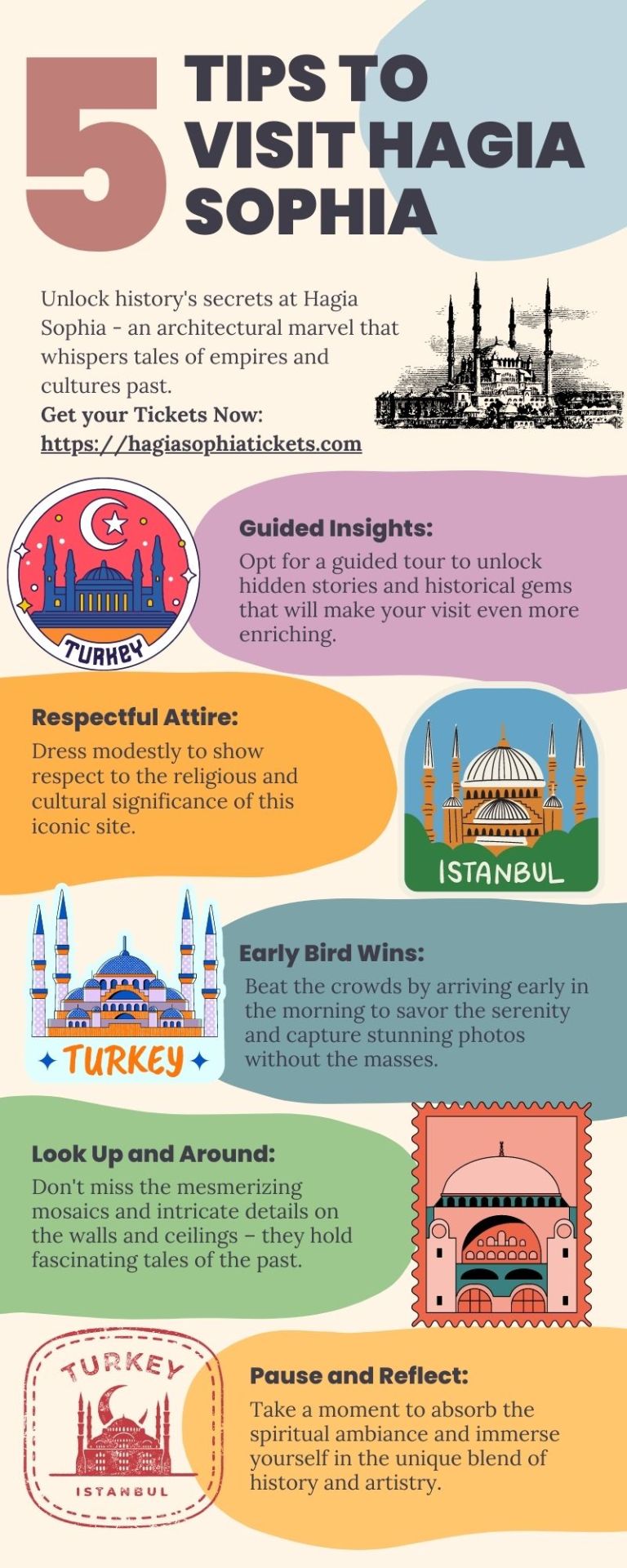
When visiting Hagia Sophia, consider these helpful tips to make the most of your experience. Firstly, plan your visit for weekdays, preferably Tuesdays to Thursdays, to avoid the weekend crowds. Arriving early in the morning shortly after the opening time allows for a more peaceful and immersive exploration of the monument. If possible, visit during the shoulder seasons of spring (April to May) or autumn (September to October) to avoid peak tourist numbers. Be mindful of local events and holidays to plan your trip around potential busy periods. Lastly, respect the cultural significance of Hagia Sophia, and dress modestly out of respect for its religious history and current status. Love Hagia Sophia! Learn about some amazing facts about Hagia Sophia here: 8 Amazing Historical Facts About Hagia Sophia
#travel#travel Istanbul#Hagia Sophia#Turkey#Hagia Sophia Mosque#Hagia Sophia Museum#Hagia Sophia Dome#Tips to visit Hagia Sophia#Explore Hagia Sophia#HagiaSophia#Hagia Sophia Church#Byzantine Art#Islamic Elements#Minarets#Hagia Sophia Mosaics#Istabul
2 notes
·
View notes
Text
Discovering the Enchanting Hagia Sophia Dome: A Timeless Wonder
Hagia Sophia, meaning "Holy Wisdom" in Greek, was originally built as a Christian cathedral during the reign of Emperor Justinian I in the 6th century. The construction of the Hagia Sophia Dome began in 532 CE and was a feat of engineering brilliance. It took only five years to complete, a remarkable achievement considering its complexity.
The Marvelous Dome Architecture The Hagia Sophia Dome is a true marvel of architectural innovation. Designed by gifted architects Anthemius of Tralles and Isidore of Miletus, the dome's construction was groundbreaking. It features an ingenious pendentive construction—a triangular, curved segment that supports the dome's transition from its circular base to the square walls below.
The architects used a combination of bricks and lightweight mortar to reduce the overall weight on the pendentives, allowing the dome to soar to a height of approximately 55.6 meters (182 feet). The result is a breathtakingly beautiful and structurally sound dome that continues to inspire architects and engineers to this day.
A Tale of Symbolism and Transitions Over the centuries, the Hagia Sophia Dome has witnessed significant transitions and transformations. Originally a Christian cathedral, it hosted numerous religious ceremonies and imperial events. With the conquest of Constantinople by the Ottoman Empire in 1453, it was converted into a mosque, adorned with Islamic elements such as minarets, mihrabs, and calligraphy.
In 1935, under the administration of Mustafa Kemal Atatürk, Hagia Sophia was transformed into a museum, becoming a symbol of secularism and celebrating Turkey's diverse history and cultural heritage. This cultural treasure has served as a bridge between different cultures and religions, representing unity and understanding.
The Controversy Despite its historical significance, the Hagia Sophia Dome has been a subject of controversy in modern times. The debates revolve around its status as a museum, mosque, or interfaith space. While its past transitions are a testament to its ability to adapt and embrace change, the question of its current purpose sparks passionate discussions among various stakeholders.
Preserving the Treasure Recognizing its value as a UNESCO World Heritage Site, the Turkish government, along with international organizations, has devoted considerable efforts to preserve and restore the Hagia Sophia Dome. The goal is to ensure that this extraordinary monument stands tall for generations to come, enchanting visitors from all corners of the world.
A Timeless Wonder The Hagia Sophia Dome remains a timeless wonder, weaving together the threads of history, art, and architecture. Its breathtaking design and rich history offer a glimpse into the human spirit's creativity and perseverance. As you stand beneath its awe-inspiring dome, you can't help but be transported back in time, feeling the echoes of the past and the weight of history.
Visiting the Hagia Sophia Dome is an unforgettable experience, where you can immerse yourself in the cultural tapestry of Turkey and marvel at the brilliance of ancient architecture. Each intricate detail of the dome tells a story, and every corner holds secrets waiting to be discovered.
Whether you are an architecture enthusiast, a history buff, or simply a curious traveler, the Hagia Sophia Dome will leave an indelible mark on your soul. Its allure, beauty, and significance will continue to inspire generations, reminding us of the remarkable achievements of humanity and the importance of preserving our cultural heritage.
So, the next time you find yourself in Istanbul, don't miss the opportunity to experience the enchantment of the Hagia Sophia Dome—a timeless wonder that stands as a testament to the ingenuity and creativity of human civilization.
#Hagia Sophia#Hagia Sophia Dome#Hagia Sophia Inetriors#Hagia Sophia Architecture#Istanbul#Explore Hagia Sophia#Hagia Sophia Interiors#Hagia Sophia Mosque#Hagia Sophia Museum#Hagia Sophia Church#Turkey#Visit Hagia Sophia#Mosque
1 note
·
View note
Text
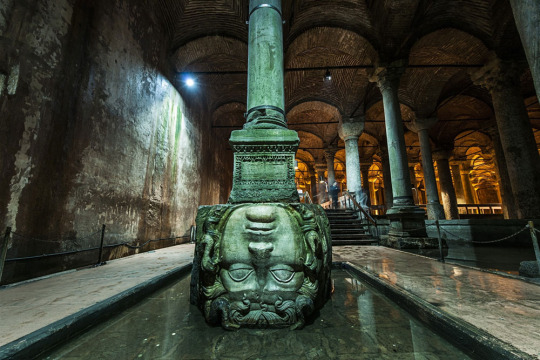

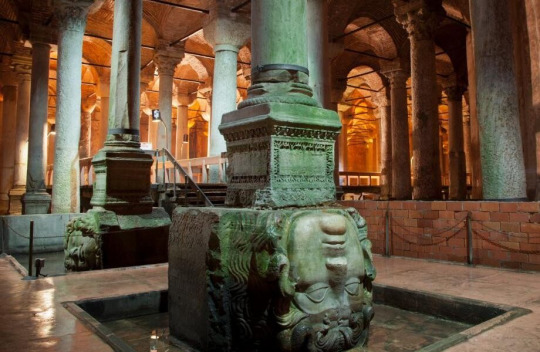
In the colossal, cathedral sized water tank beneath the Hagia Sophia in Istanbul, Turkey, several heads of Medusa have been used as pillar bases for the past 1.500 years. It is not entirely known where the heads came from, but they were believed to be taken from some other Roman ruin. The heads are upside down or sideways to inhibit the power of the Gorgon Medusa's gaze.
The water tank's existence was forgotten for hundreds of years, despite being beneath the Hagia Sophia. When it was rediscovered, explorers found fish inside of it.
21K notes
·
View notes
Text
BEYONDTRAVEL - PRO+

Explore Turkey's Wonders with Beyond Travel
Beyond Travel stands as a prominent travel agency in Turkey, dedicated to providing unforgettable holiday experiences. Offering a wide range of options such as Istanbul tours, Cappadocia tours, Bursa tours, and more, Beyond Travel serves as the perfect gateway to exploring Turkey's most sought-after tourist destinations. Here's what Beyond Travel has to offer:
Istanbul Tour:
Embark on a journey through the rich history and vibrant culture of istanbul tour with Beyond Travel. Visit iconic landmarks such as Hagia Sophia, Topkapi Palace, and the Blue Mosque as you immerse yourself in the enchanting atmosphere of this historic city.
Cappadocia Tour:
Discover the breathtaking natural beauty of Cappadocia with Beyond Travel's specialized tours. From hot air balloon rides over the fairy chimneys to exploring underground cities, Cappadocia tour offers a truly magical experience that will leave you in awe.
Airport Transfer:
Experience comfortable and reliable airport transfer with Beyond Travel, serving various airports across Turkey. Whether you're arriving in Istanbul, Ankara, or Antalya, Beyond Travel ensures seamless transportation to your hotel or tourist destination.
Turkey Tours:
Explore the diverse landscapes and rich cultural heritage of Turkey with Beyond Travel's curated turkey tours. Sail the turquoise waters of the Aegean Sea, venture into the mystical forests of the Black Sea region, or unwind on the sun-kissed beaches of the Mediterranean coast. Beyond Travel offers a variety of options to suit every traveler's preferences.
Bursa Tour:
Discover the historic city of Bursa tour, known for its stunning architecture, rich history, and natural beauty. Explore ancient landmarks, visit the famous Green Mosque and Green Tomb, and indulge in the city's renowned cuisine with Beyond Travel's Bursa tours.
Beyond Travel invites you to embark on an unforgettable journey through Turkey's wonders. With professional guides and personalized service, Beyond Travel ensures that every moment of your trip is filled with joy and discovery. Explore Turkey's enchanting atmosphere with Beyond Travel and create memories that will last a lifetime.
1K notes
·
View notes
Text

17th-century illustration with floor plan of the Blue Mosque by French explorer Guillaume-Joseph Grelot. The Blue Mosque, also known as the Sultan Ahmed Mosque, is an important imperial house of prayer in Istanbul built during the early 17th century by sultan Ahmed I. The layout is classical Ottoman: one central dome surrounded by four semi-domes. It also has a large courtyard flanked by four minarets with a further set of minarets beside the building itself. The name "Blue Mosque" comes from its interior which is decorated with many Iznik tiles with floral motives. Sultan Ahmed was buried here after his death in 1617. The külliye (religious complex) also includes a madrasa. It is located in front of the Hagia Sophia, and is today a famous part of the iconic skyline of Istanbul.
#ottoman#ottoman empire#ottoman history#islamic history#islamic art#istanbul#turkish#turkey#turkish culture
27 notes
·
View notes
Text

🏰✨ Experience the breathtaking Blue Mosque in Istanbul, Turkey! 🇹🇷 With its stunning domes & intricate tiles, this iconic landmark is a must-visit. Plan your trip hassle-free—secure your Turkey visa online & explore Istanbul’s rich history. Don’t miss the Hagia Sophia & Grand Bazaar nearby! 🕌✈️
2 notes
·
View notes
Text




Explore the enchanting blend of history, culture, and natural beauty with Turkey Tour Packages. Discover the captivating Istanbul, where East meets West, and traverse ancient wonders like the Hagia Sophia and Blue Mosque see more at: https://shorturl.at/vuXtQ
#international tour package#rajasthan tour package#travel agency in delhi#jaipur tour package#kerala tour package#himachal tour package#travel agency in india#golden triangle package#varanasi tour package#south india tour package#international tour packag#turkey tour package#istanbul tour package#tour operator in delhi#tour operators in delhi#travel agents in delhi
2 notes
·
View notes
Text
BEYONDTRAVEL - PRO+

Explore Turkey with Beyond Travel: Your Gateway to Unforgettable Adventures
Beyond Travel is your premier destination for discovering the wonders of Turkey. From İstanbul tour to Cappadocia adventures, our expertly crafted tours offer an immersive experience into the rich history, culture, and natural beauty of this mesmerizing country.
Start your journey in Istanbul, where East meets West in a vibrant fusion of cultures. Explore the historic sites of the Hagia Sophia, Topkapı Palace, and Blue Mosque, and stroll through the bustling streets of the Grand Bazaar. Our Istanbul tours offer a deep dive into the city's fascinating history and architectural marvels.
Venture into the otherworldly landscapes of Cappadocia tour, where ancient cave dwellings and fairy chimneys dot the horizon. Witness the breathtaking beauty of the region from a hot air balloon, and explore the underground cities and rock-cut churches that make Cappadocia a UNESCO World Heritage Site.
For those looking to explore beyond the beaten path, our Turkey tours offer a comprehensive exploration of the country's diverse regions. From the pristine beaches of the Aegean coast to the stunning landscapes of Pamukkale and the ancient ruins of Ephesus, our tours cover the best of Turkey's attractions.
Our airport transfer services ensure a seamless and comfortable start to your journey, with reliable and efficient transportation to and from the airport.
Experience the beauty and diversity of Turkey tours and Bursa tour with Beyond Travel. Book your tour today and embark on an unforgettable adventure.
1K notes
·
View notes
Text
The Fall of Constantinople in 1453 marked a significant turning point in world history, with profound effects on Europe, the Islamic world, and global trade routes. Here’s an overview of the event and its implications for European conquest:
The Fall of Constantinople:
- Background: Constantinople, the capital of the Byzantine Empire, was a major center of trade, culture, and Christianity. It had been under increasing pressure from the expanding Ottoman Empire.
- Siege of 1453: The city was besieged by Sultan Mehmed II and the Ottoman forces. The Ottomans employed advanced military technology, including large cannons, to breach the city's formidable walls.
- Capture: After a prolonged siege, Constantinople fell on May 29, 1453. This event marked the end of the Byzantine Empire and solidified Ottoman control over the eastern Mediterranean.
Immediate Impacts:
- Religious Shift: The fall led to the transformation of Constantinople into Istanbul, with the Hagia Sophia converted into a mosque, symbolizing the shift in religious power from Christianity to Islam in the region.
- Cultural Exchange: The event accelerated the movement of scholars, particularly Greek ones, to the West. This influx helped ignite the Renaissance by reintroducing classical Greek and Roman knowledge to Europe.
Rise of European Conquest:
- Shift in Power Dynamics: With the Byzantine Empire’s collapse, Western Europe no longer had a powerful Christian state to counter the Ottomans. This void spurred exploration and colonial ambitions among European nations.
- Exploration: European powers, particularly Spain and Portugal, sought new trade routes to access the riches of Asia. This led to significant maritime exploration, including voyages by figures like Christopher Columbus and Vasco da Gama.
- Colonial Expansion: The discovery of the New World and sea routes to India allowed for the establishment of colonies and trade networks, leading to the rise of European empires in the Americas, Africa, and Asia.
- Military and Technological Advancements: The experiences of warfare during the siege and subsequent confrontations with the Ottomans prompted advancements in military technology and tactics in Europe, which facilitated further conquests.
Conclusion:
The Fall of Constantinople was not just a pivotal moment in the history of the Eastern Mediterranean; it profoundly affected European political, cultural, and economic trajectories. The resulting shift in power dynamics set the stage for the Age of Exploration and colonial expansion, reshaping the world in ways that are still evident today.
4 notes
·
View notes
Text





Istanbul is one of the most significant cities in the world, both historically and culturally. Connecting Asia and Europe, the city has always been of strategic importance due to its unique geographical location. The history of Istanbul dates back to its time as the capital of both the Byzantine and Ottoman Empires. Iconic landmarks such as Hagia Sophia, Topkapi Palace, and the Blue Mosque are symbols of the city’s rich past. Structures like the Galata Tower and Maiden’s Tower also contribute to the aesthetic skyline of Istanbul.
The Bosphorus is a unique waterway that divides Istanbul between two continents. Bosphorus cruises are one of the best ways to experience this natural beauty up close. The historical mansions and bridges on either side of the Bosphorus showcase the city’s blend of modern and traditional architecture. The streets of Istanbul are like an open-air museum, where you can find traces of various civilizations on every corner.
Istanbul also has a rich culinary culture. Street foods such as simit, fish sandwiches, and döner are integral parts of the city’s food scene. Additionally, modern cafés and traditional tea gardens are perfect spots to relax while exploring the city.
The city stands out with its art and cultural events. Festivals such as the Istanbul Film Festival, Biennial, and music festivals bring together both local and international art lovers. Modern art galleries and museums keep the creative spirit of the city alive.
One of the captivating aspects of Istanbul is the harmonious coexistence of modern life with its historical texture. While skyscrapers rise on one side, Ottoman-era bazaars still thrive on the other. The Grand Bazaar and Spice Bazaar offer both shopping and a cultural experience.
Finally, Istanbul is a city that offers different beauties in every season. In spring, it blooms with tulips, in summer you can cool off by the Bosphorus, in autumn you can enjoy walks through its historic streets, and in winter you can admire the snow-covered minarets.
2 notes
·
View notes
Text
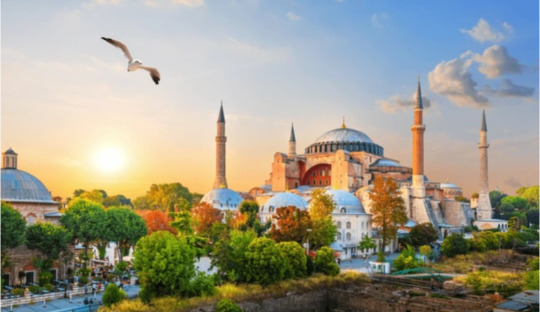






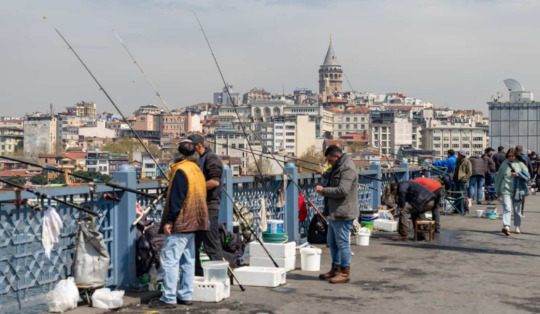
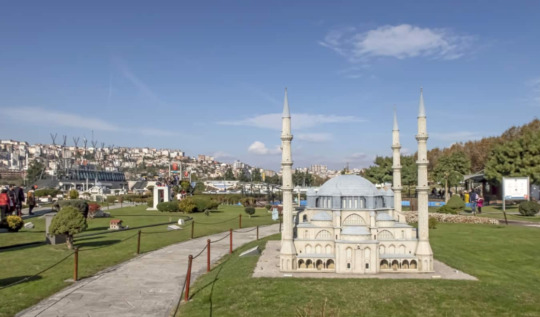
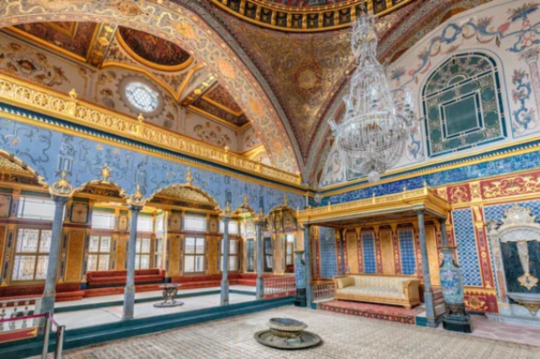

Istanbul boasts renowned historical sites like the Blue Mosque and Hagia Sophia, drawing crowds. However, the city offers lesser-known, crowd-free attractions worth exploring. While visiting iconic landmarks is crucial for cultural immersion, exploring Istanbul's unique attractions adds depth to your experience. After exploring the main tourist spots, delve into Istanbul’s hidden gems
2 notes
·
View notes
Note
What’s Hagianity?
I put it in my bio when I was first exploring the foundations of my beliefs as a Christopagan. At that time, I felt a deep need for a specific label as I was coming out of Catholicism. It's really just a word I made up to summarize my view of an Abrahamic pantheon, based out of Hagia Sophia, who had been my main focus at the time. Embarassingly enough, I was also hoping someone would ask me about it so I could share without feeling like I was trying to proselytize (ironic lol)
My practice is more so centered around Amaris than Sophia at the moment but I still think Hagianity is a decent term that parallels Christianity in the centering of the Daughter/Son without needing to inherently diminish the Mother/Father. I wouldn't now feel the need to try to find a term for myself or to put it in my bio, but it's already there and there isn't any reason to get rid of it. And hey, someone did end up asking so past me technically accomplished one of flair goals, even if it's not my goal anymore lol
2 notes
·
View notes
Text


In the colossal, cathedral sized water tank beneath the Hagia Sophia in Istanbul, Türkiye, several heads of Medusa have been used as pillar bases for the past 1,500 years. It is not entirely known where the heads came from, but they were believed to be taken from some other Roman ruin. The heads are upside down or sideways to inhibit the power of the Gorgon Medusa's gaze. The water tank's existence was forgotten for hundreds of years, despite being beneath the Hagia Sophia. When it was rediscovered, explorers found fish inside of it.
3 notes
·
View notes
Text







Architecture appreciation post from my travel/exploration spam!
Right to left:
St Patrick's Cathedral, Pakistan- an example of the Gothic Revival architecture of the British colonial era
Hindu Gymkhana, Pakistan- Indo-Sarcacenic style, a blend of Indian, Islamic and European architectural elements
Heydar Aliyev Center, Azerbaijan- Neo-futurism, by none other than Zaha Hadid
Topkapi Palace, Turkiye - Ottoman-Baroque style! I think eastern and western fusions really create the best styles out there
Hagia Sophia, Turkiye- Byzantine era architecture, and possibly my favorite building in the whole world
Hadrian's gate, Turkiye- OG Roman era structure, the carvings on the coffers were a mind blowing discovery for me personally
Sharda Peeth, Pakistan - I can't find the style, but it's a Hindu Temple/learning center. Very original, interesting structure, although it's in ruins, sadly.
4 notes
·
View notes
Text
Europe Travel Destination
Europe, a continent steeped in history and brimming with diverse cultures, offers an array of captivating travel destinations for enthusiasts seeking to immerse themselves in its rich heritage. From the romantic allure of Paris to the timeless charm of Rome, Europe’s cities beckon travelers with their iconic landmarks, renowned art scenes, and delectable cuisines. Let’s embark on a journey through this enchanting continent, uncovering its hidden gems and celebrated treasures.
Paris, France: Known as the “City of Love,” Paris exudes an unparalleled romantic ambiance with its iconic landmarks like the Eiffel Tower, Notre-Dame Cathedral, and the Louvre Museum. Stroll along the Seine River, savoring exquisite French cuisine in quaint cafes, or indulge in a leisurely picnic at the picturesque Luxembourg Gardens.

Santorini, Greece: Santorini, a picturesque island in the Aegean Sea, lures visitors with its stunning sunsets, whitewashed buildings, and crystal-clear waters. Explore the charming villages of Oia and Fira, perched atop dramatic cliffs, or unwind on the island’s volcanic beaches, savoring local delicacies and fine wines.
Prague, Czech Republic: Prague, the “City of a Hundred Spires,” boasts a fairy-tale charm with its medieval old town, majestic castles, and ornate cathedrals. Wander through the cobblestone streets of Prague Castle, cross the iconic Charles Bridge, or savor traditional Czech cuisine in cozy taverns.
Amsterdam, Netherlands: Amsterdam, a city of contrasts, delights visitors with its picturesque canals, historic architecture, and vibrant cultural scene. Discover the masterpieces of Dutch art at the Van Gogh Museum and Rijksmuseum, cycle along the city’s scenic bike paths, or cruise the iconic canals aboard a traditional boat.
Florence, Italy: Florence, the birthplace of the Renaissance, beckons art aficionados with its wealth of masterpieces, including Michelangelo’s David and Botticelli’s Birth of Venus. Immerse yourself in the city’s rich artistic heritage as you explore the Uffizi Gallery, stroll across the Ponte Vecchio, and savor Tuscan cuisine in quaint trattorias.
Dubrovnik, Croatia: Dubrovnik, a UNESCO World Heritage Site, enchants visitors with its medieval walls, baroque architecture, and stunning Adriatic coastline. Walk along the ancient city walls for panoramic views of the terracotta rooftops and shimmering sea, or explore the charming streets of the old town, brimming with historic landmarks and hidden gems.
Vienna, Austria: Vienna, the capital of classical music, entices travelers with its elegant boulevards, imperial palaces, and vibrant cultural scene. Attend a performance at the iconic Vienna State Opera, stroll through the magnificent Schönbrunn Palace gardens, or indulge in a slice of Sachertorte at a traditional Viennese café.
Budapest, Hungary: Budapest, the “Queen of the Danube,” mesmerizes visitors with its stunning architecture, thermal baths, and rich cultural heritage. Admire the neo-Gothic Parliament building, relax in the healing waters of the Széchenyi Thermal Bath, or take a scenic cruise along the Danube River, soaking in panoramic views of the city’s skyline.
Edinburgh, Scotland: Edinburgh, a city of contrasts, captivates visitors with its medieval Old Town, elegant Georgian New Town, and dramatic hilltop castle. Explore the cobbled streets of the Royal Mile, hike up Arthur’s Seat for breathtaking views of the city, or delve into Scotland’s rich history at the Edinburgh Castle and National Museum.
Istanbul, Turkey: Istanbul, the bridge between Europe and Asia, mesmerizes visitors with its rich tapestry of cultures, stunning architecture, and vibrant bazaars. Immerse yourself in the city’s Byzantine and Ottoman heritage as you explore iconic landmarks like the Hagia Sophia, Blue Mosque, and Topkapi Palace.
Reykjavik, Iceland: Reykjavik, the world’s northernmost capital, enchants visitors with its otherworldly landscapes, geothermal wonders, and vibrant arts scene. Discover the geological marvels of the Golden Circle, soak in the healing waters of the Blue Lagoon, or chase the mesmerizing Northern Lights dancing across the Arctic sky.
Krakow, Poland: Krakow, a city steeped in history, delights visitors with its medieval charm, stunning architecture, and vibrant cultural scene. Wander through the cobblestone streets of the UNESCO-listed Old Town, visit the poignant Auschwitz-Birkenau Memorial, or marvel at the stunning Gothic masterpiece of St. Mary’s Basilica.
Athens, Greece: Athens, the cradle of Western civilization, beckons travelers with its ancient wonders, including the iconic Acropolis, Parthenon, and Temple of Olympian Zeus. Immerse yourself in the city’s rich history as you explore archaeological treasures at the Acropolis Museum, stroll through the historic Plaka neighborhood, or savor Greek cuisine in bustling tavernas.
Dublin, Ireland: Dublin, a city steeped in literary history and vibrant culture, invites visitors to explore its charming streets, historic landmarks, and lively pub scene. Visit the iconic Trinity College and Book of Kells, stroll along the scenic River Liffey, or raise a glass of Guinness in one of the city’s traditional pubs, where live music fills the air.
Lisbon, Portugal: Lisbon, Europe’s sunniest capital, captivates visitors with its colorful streets, historic neighborhoods, and breathtaking views. Explore the winding alleys of the Alfama district, ride the iconic yellow tram through the city’s hills, or soak up the sun on the golden sands of nearby Cascais and Estoril beaches.
Stockholm, Sweden: Stockholm, a city spread across 14 islands, enchants visitors with its stunning architecture, scenic waterways, and rich cultural heritage. Explore the historic Gamla Stan, visit the impressive Vasa Museum, or take a leisurely boat tour through the city’s picturesque archipelago.
Copenhagen, Denmark: Copenhagen, a city of fairy tales and bicycles, invites visitors to explore its historic landmarks, vibrant neighborhoods, and innovative culinary scene. Marvel at the iconic Little Mermaid statue, wander through the colorful houses of Nyhavn, or experience the world-famous Tivoli Gardens, an enchanting amusement park in the heart of the city.
Berlin, Germany: Berlin, a city steeped in history and creativity, offers visitors a captivating blend of iconic landmarks, vibrant street art, and world-class museums. Explore the historic remnants of the Berlin Wall, visit the poignant Holocaust Memorial, or immerse
2 notes
·
View notes
Text

The Water Tank's Existence Was Forgotten For Hundreds Of Years, Despite Being Beneath The Hagia Sophia. When It Was Rediscovered, Explorers Found Fish Inside Of It.
2 notes
·
View notes